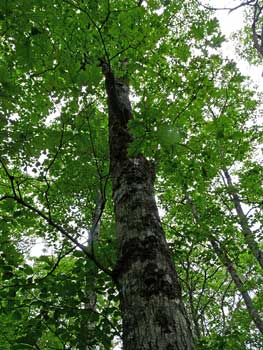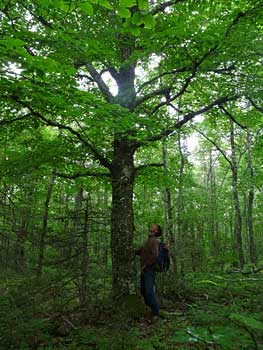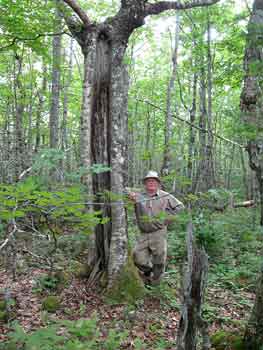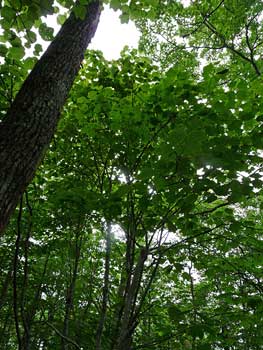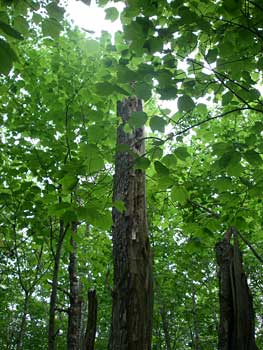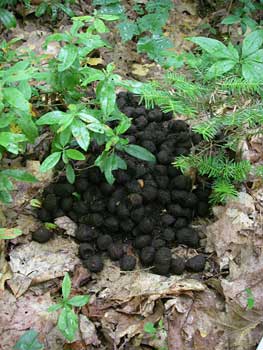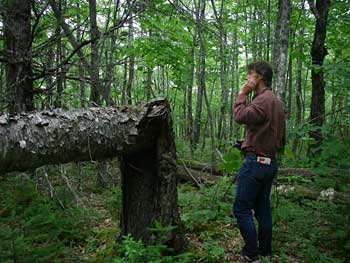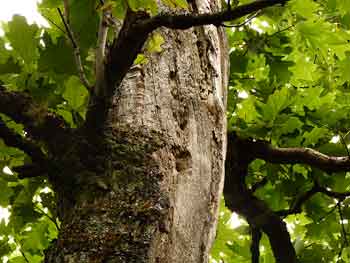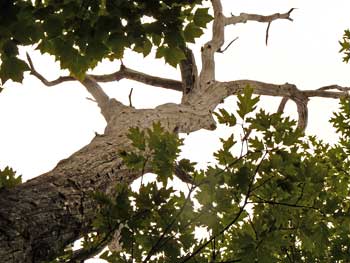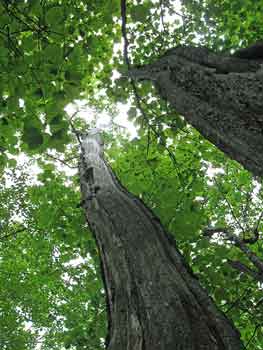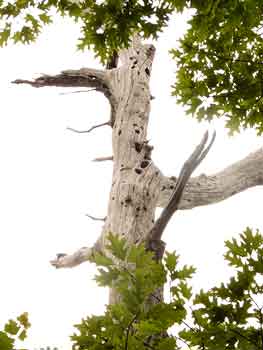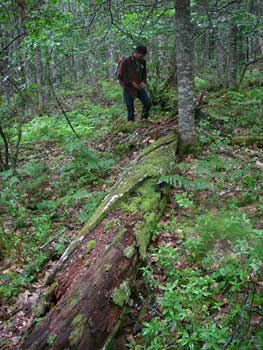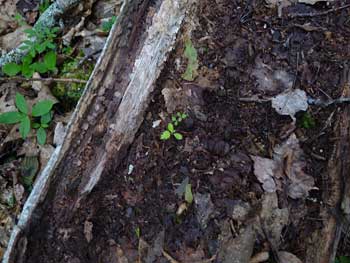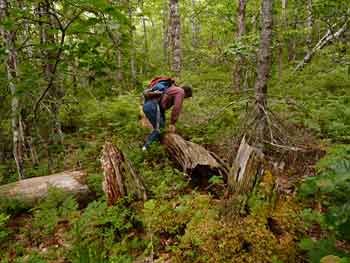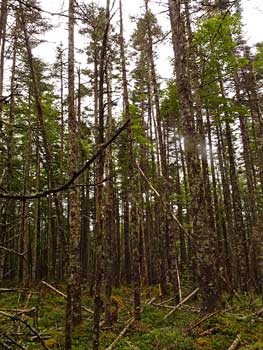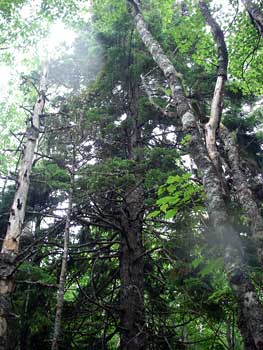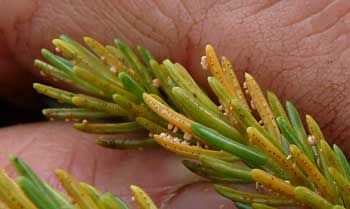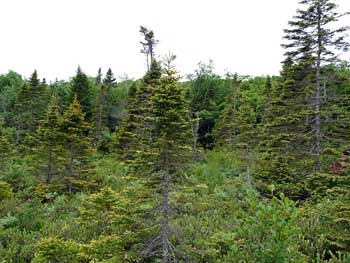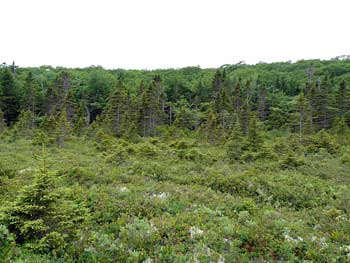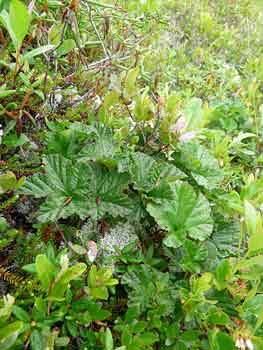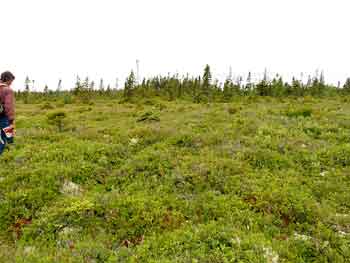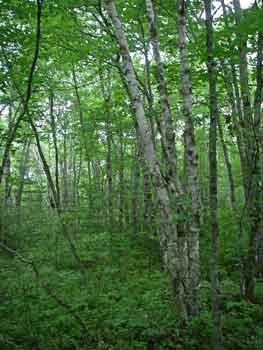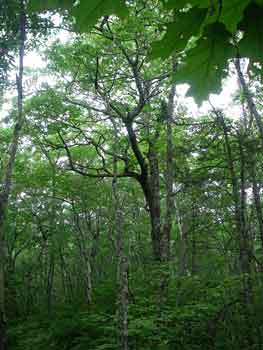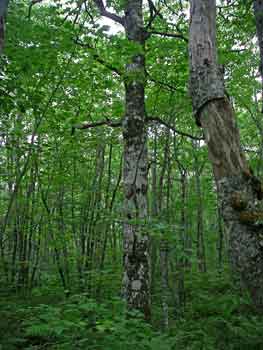These areas supported mixed hardwoods with red oak still tending to be a dominant species Compared to the old growth oak stand, they
- lacked striped maple
- had a less well developed witch hazel subcanopy
- largely lacked yellow birch; some big tooth aspen present; more paper birch; white pine was noticebably absent in the areas we walked through ( it was also absent at the old growth stand)
- had very little fallen dead wood and snags
- appeared to be of younger, more uniform (even) age, mosty 4-6" dbh, although occasional large oaks were present
In some areas, tall huckleberry (approx 2 m, 6 feet) seemed to exclude seedlings of hardwood species. The fetaures above are suggestive of a canopy-killing disturbance(s) within the not-too-distant past, presumably fire and possibly oakleaf roller damage which was apparently extensive about 40 years ago. If such areas are not further disturbed by frequent fires, or by cutting, it seems likely they would eventually develop more of the characteristics observed in the old growth stand.
|

